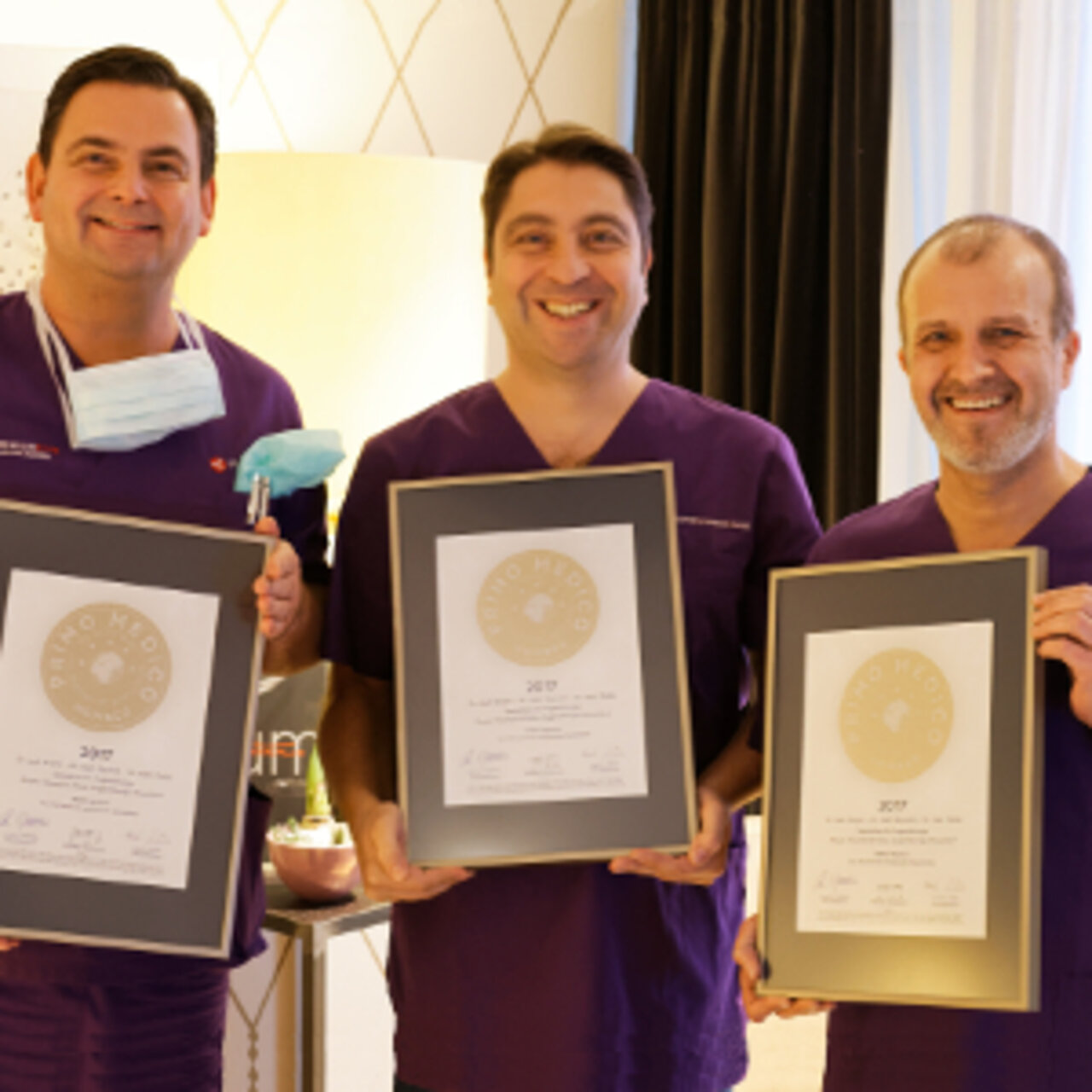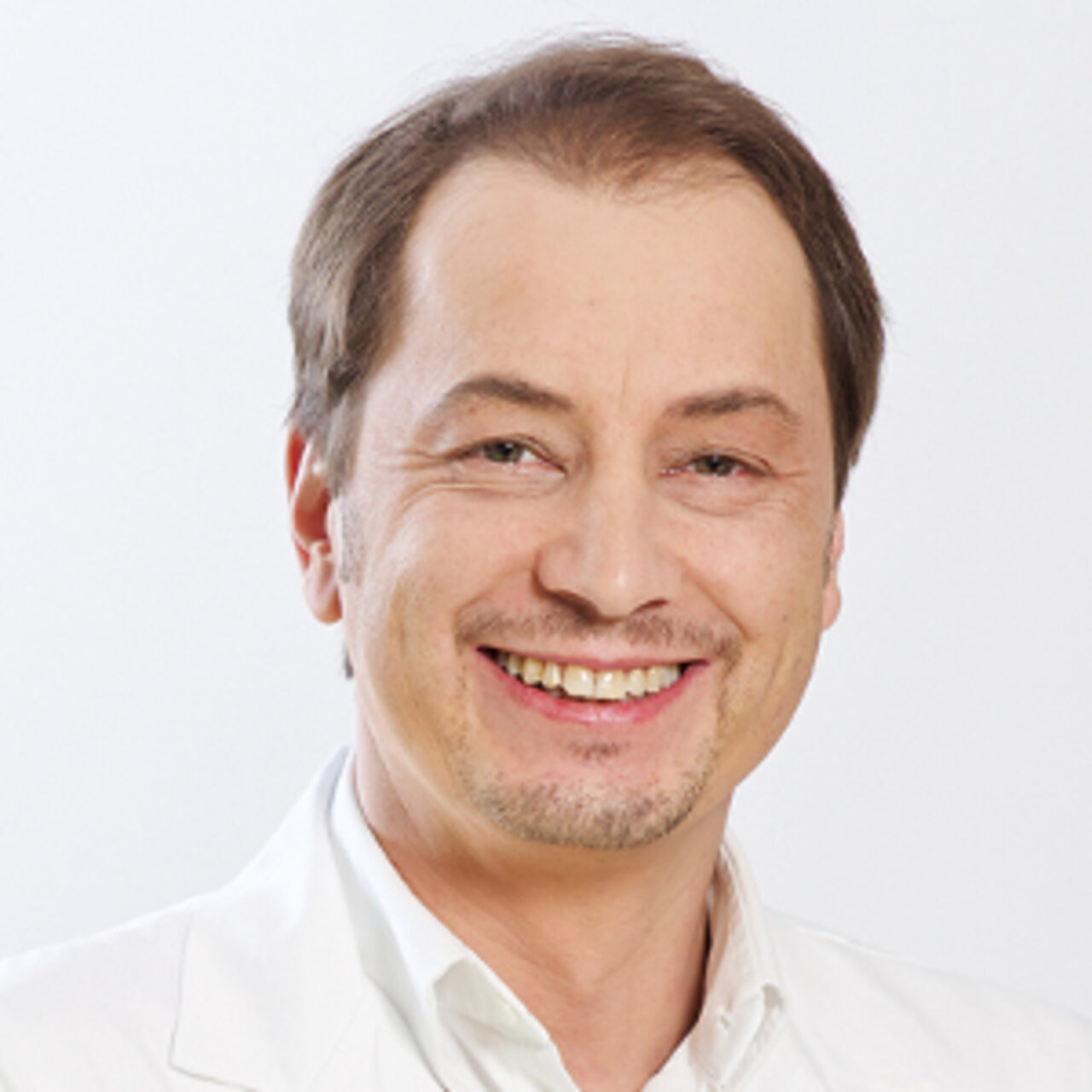Specialists in Eye examination
3 Specialists found
Information About the Field of Eye examination
What eye examinations are available?
The eye is a highly complex organ of sense. Defective visionand eye disorders are frequent. Various methods of examining the eye serve to assess vision as well as the involved structures:
Examination of the eye segments
When examining the eye, your doctor will thoroughly inspect each part of your eye. With a small lamp, the eyelids, the cornea, the conjunctiva and the front chamber of the eye can be examined. In addition, an ophthalmoscope shows the back part of the eye beyond the lens: the vitreous body, the choroid, the retina and papilla of the optic nerve. An ophthalmoscope is a small tool containing a mirror and a light source. The mirror is used to direct the light into the eye.
In order to examine the eye more closely and reveal fine details, a slit lamp can be utilized by the ophthalmologist. It is a microscope equipped with a light source that can be tilted. It enables the ophthalmologist to shine light on the eye from different planes and accurately visualize the surface of the eye and the anterior chamber of the eye. For viewing the posterior segment of the eye, the ophthalmologist will attach a converging lens onto the microscope or a contact lens directly onto the cornea of the eye. In this way, he can assess the vitreous body as well as the retina by looking through the patient's pupil.
Testing of visual acuity
In order to determine visual acuity, patient are asked to distinguish characters, numbers or letters from a specific distance during the ophthalmologic examination. The signs are presented on a board or projected to the wall in various sizes to check the distant vision. For this examination, a patient is seated in front of the board at a certain distance and is asked to read aloud the letters or recognize the characters. Doing this, the ophthalmologist is able to recognize if the visual acuity is lowered. Normal visual acuity is indicated as 1.0. To check near vision, small reading charts are provided, which the patient must hold at a reading distance.
If smaller signs are missed, the doctor or optician will determine the strength of the visual defect. This is known as refraction determination. If you are short-sighted, you can see the signs at a distance less easily. The ophthalmologist or optometrist will measure the level of short-sightedness by placing lenses of varying strengths in front of the eye until they a patient see even the small characters or letters sharply. People with far-sightedness are unable to see the characters peoperly at reading distance. Also in this case, lenses of different strengths are used. Before that, the doctor will administer eye drops that relax the eye muscles. It is only in this way that the degree of far-sightedness can be properly determined.
Testing the visual field (perimetry)
Besides visual acuity, also the visual field matters for vision. The visual field is defined as the area that you can perceive without moving your eyes. Some eye diseases can limit the visual field.
A computerized perimeter is used to evaluate the visual field. The test is done on one eye after the other. Patients gaze into the device and are asked to focus on a central point. Lights will come on at variable intervals all around this central point. Each time patients see a point, they have to push a button. If they are unable to see the light points, it means that the visual field in this area is impaired.
Further examinations of vision
Additional investigations, such as specific color charts, help the doctor to assess color vision along with twilight and night vision.
Measurement of intraocular pressure (tonometry)
With a tonometer, the ophthalmologist can determine the intraocular pressure. Some tonometers can measure the intraocular pressure directly on the surface of the cornea. This requires anesthesia with eye drops. Apart from that, devices are also available that do not come into direct contact with the cornea, but instead use an air pulse to measure the intraocular pressure. No anesthesia of the eye is necessary for this.
Further examinations
There are additional investigation methods to check for certain diseases. For instance, an ultrasound examination allows the thickness of the lens and the length of the eyeball to be measured or a tumor to be identified. Electroretinography (ERG) is a way of measuring the retina's response to a short light flash and can be helpful in certain retinal diseases.
Which eye exams are useful?
Each routine examination of the eye should include visual acuity, pupillary response, ocular motility and investigation of the anterior and posterior segments of the eye with a slit lamp and ophthalmoscope. For elderly patients, intraocular pressure should be tested at each eye examination as well.
If short-sightedness or a retinal disease are suspected, the physician will also widen the pupil using eye drops in order to see the retina more clearly.
For clarification of particular conditions, the ophthalmologist may perform further tests, such as a visual field test or ultrasound examination.
Special eye examinations
Eye check-up for kids
The eyes and the visual performance are assessed during every U-screening at the pediatrician. Children have to recognize small pictures or a capital E oriented in varying directions to determine their visual acuity. The pediatrician also examines spatial vision and color vision using special images. In case of abnormalities, the child is referred to an ophthalmologist.
Examination of the macula
The macula represents a spot approximately five millimeters in size that is located centrally in the retina. With age-related macular degeneration, this spot becomes damaged. In order to inspect the macula, the pupil first has to be dilated by administering eye drops. Using a slit lamp and an ophthalmoscope, the ophthalmologist can have a look at the retina and detect any changes in the macula. Depending on the results, more extensive tests may be necessary. Optical coherence tomography (OCT) makes it possible to assess the retina in more detail.
Optical Coherence Tomography (OCT)
OCT refers to an imaging technique that is mainly used to examine the retina. OCT can visualize structures and layers of the retina by reflecting light from boundaries between tissue layers. It is particularly suitable for the diagnosis of macular diseases and diabetic retinopathy. OCT can reveal retinal detachment, edema and cysts in the retina and vascular tumors.
Glaucoma examination
Glaucoma is a term used to describe a variety of diseases that cause damage to the optic nerve. A frequent cause is increased intraocular pressure which occurs when the outflow of aqueous humor is obstructed and this liquid consequently accumulates in the anterior chamber of the eye.
In case of suspected glaucoma, the ophthalmologist will determine the intraocular pressure with a tonometer. Normal values range from 10 to 21 mmHg. Readings above 22 mmHg may suggest glaucoma.
A typical feature of glaucoma is cupping in the center of the optic nerve papilla. This can be seen during ophthalmoscopy. In advanced stages, damage to the nerve filaments can produce visual field loss. For this reason, the doctor also examines the visual field in patients with glaucoma.
An additional part of diagnosing glaucoma is the examination of the chamber angle (gonioscopy). To find the cause of the obstruction of the aqueous humor drainage, the ophthalmologist inspects the chamber angle using a special lens placed on the anesthetized cornea. Normally, this is where the aqueous humor is being drained.
Eye examination for diabetics
Preventive medical checkups for diabetes patients include regular eye examinations. After all, diabetic retinopathy which is a retinal disease, represents one of the most common secondary diseases caused by diabetes. Diabetic retinopathy is brought on by elevated blood sugar levels that damage the small blood vessels supplying the retina. During an opthalmoscopic examination, first signs of diabetic retinopathy, such as small bleedings and deposits in the retina, can be detected before the patient becomes aware of the disease. As it can lead to vision problems or even retinal detachment as it progresses, regular eye exams are crucial. In this way, the doctor can detect more severe damage to the retina and newly formed vessels in the retina early on.
Fluorescein angiography is a diagnostic tool that allows the retinal vessels to be illustrated in more detail. It involves injection of a fluorescent agent into a vein. This dye also reaches the vessels of the retina via the blood circulation. A camera containing special color filters helps the physician to see defective blood vessels and small vascular bulges referred to as microaneurysms. Optical coherence tomography (OCT) is another way to examine the retina and vessels in diabetic retinopathy.
What are the costs of an eye examination?
Children's eye examinations are provided free of charge as part of the U-screenings. Preventive examinations for adults are generally not covered by health insurance. A simple eye test, as needed for your driver's license or for other private reasons, usually costs between 4 and 18 euros. If additional examinations are required, it can add up to more than 100 euros, according to the extent of examinations. Health insurance companies cover necessary examinations in most cases.
Which doctors and clinics are specialists for an eye check-up?
Let us help you find an eye expert for your condition. All listed doctors and clinics have been reviewed by us for their outstanding specialization in the field of eye diagnostics and are looking forward to your inquiry or your wish for treatment.


